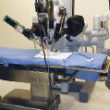Use of 3D virtual reality models in planning robotic prostatectomy
Before performing complex operations such as robotic-assisted radical prostatectomy, surgeons review 2-dimensional MRI cross-sectional images to understand 3-dimentional (3D) patient-specific anatomy. This study utilized 3D virtual reality models for operative planning.
Three-dimensional virtual reality planning supplemented information from MRI and biopsy results. The primary outcome measure was margin status; secondary outcomes were oncologic control, sexual function and urinary function. Ninety-two patients were analyzed with trends toward lower positive margin rates in the group undergoing 3-D virtual reality planning. No difference in functional outcomes and in traditional operative metrics were noted. Detectable postoperative PSA was significantly lower in the intervention group. In 32% of intervention cases, the surgeons modified their operative plan based on the model. When this subset was compared to the control group, there was a strong trend toward increased bilateral nerve sparing in the intervention subset, as well as a significant difference in postoperative detectable PSA results.
The randomized clinical trial demonstrated patients whose surgical planning involved 3DVirtual reality models have better oncologic outcomes while maintaining functional outcomes.
J Urol.2022 Sep; doi.org/10.1097/JU.0000000000002719




















